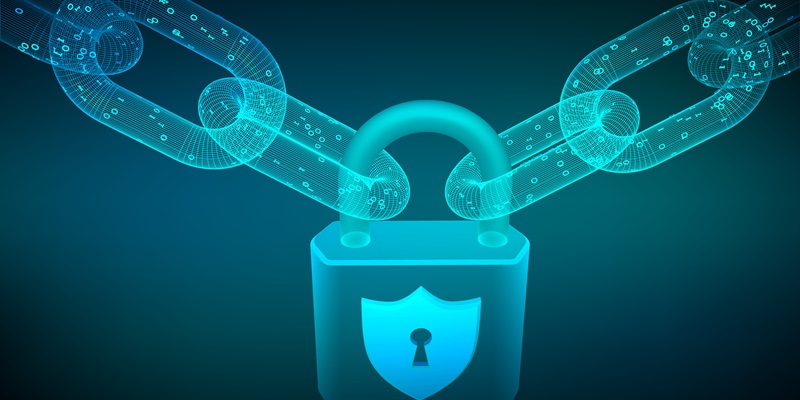Blockchain, originally devised as the underlying technology for Bitcoin, has grown beyond its cryptocurrency origins to become a disruptive force across various industries. This revolutionary technology offers secure, transparent, and decentralized solutions that have the potential to transform the way we secure, manage, and authenticate data in the digital landscape.
Decentralization and Secure Storage of Personal Information
The decentralized nature of blockchain eliminates the risk of a central repository being breached, ensuring that personal information remains secure and only accessible to authorized entities. Unlike traditional centralized systems where a single breach could compromise the privacy and security of individuals, blockchain ensures that data is distributed across multiple nodes, making it extremely difficult for hackers to tamper with or access sensitive information.
The Role of Smart Contracts in Automating Security Protocols
Smart contracts, which are self-executing contracts with terms of the agreement directly written into code, automate various security protocols. They ensure that transactions are carried out securely and foster a trustworthy environment for digital interactions. By removing the need for intermediaries, smart contracts streamline processes while eliminating risks associated with human error or manipulation. This automated approach to security enhances efficiency and reduces vulnerabilities.
Challenges and Vulnerabilities of Blockchain
While blockchain technology offers enhanced security, the distributed nature of blockchain networks makes them susceptible to novel attack vectors. Malicious actors may attempt to manipulate the consensus algorithm, launch 51% attacks, or exploit vulnerabilities within the smart contract code. Therefore, ongoing development and robust security measures are necessary to address these emerging cybersecurity challenges.
Ongoing Development to Address Cybersecurity Challenges
As the blockchain ecosystem evolves, the industry continuously works to identify and address vulnerabilities in order to enhance its security. Development teams conduct rigorous security audits and testing, and practitioners in the field collaborate to create innovative solutions. This ongoing effort ensures that blockchain remains a secure and reliable technology, capable of withstanding the ever-evolving tactics employed by cybercriminals.
The Integration of Blockchain and Cybersecurity
The integration of blockchain and traditional cybersecurity measures creates a robust infrastructure capable of withstanding the sophisticated tactics employed by cybercriminals. By combining blockchain’s decentralized and tamper-resistant nature with established cybersecurity practices such as encryption, authentication, and access controls, organizations can strengthen their defense against cyber threats. This integration augments security protocols, enhances data integrity, and provides a trustworthy foundation for digital interactions.
Government and Regulatory Involvement
Recognizing the potential of blockchain technology, governments and regulatory bodies are actively engaging with industry stakeholders to develop frameworks that facilitate the responsible adoption of blockchain technology while addressing security and privacy concerns. Collaboration between the public and private sectors ensures that adequate regulations and standards are in place, fostering an environment of trust and security in the adoption and implementation of blockchain technology.
The Future of Blockchain and Cybersecurity
The synergy between blockchain and cybersecurity is poised to redefine the digital landscape, revolutionizing how we secure, manage, and authenticate data in an interconnected world. With the implementation of blockchain technology, organizations can establish greater transparency, accountability, and trust in their digital operations. From supply chain management to healthcare records, the potential applications of blockchain in enhancing data security are vast.
The Power of Blockchain and Cybersecurity Together
Blockchain technology is reshaping the cybersecurity landscape, enhancing data integrity, securing digital identities, and automating security protocols. The decentralized and immutable nature of blockchain ensures the integrity of data, making it less susceptible to manipulation or unauthorized access. Additionally, blockchain-based solutions such as digital identities provide individuals with greater control over their personal information while offering heightened security against identity theft and fraud.
As we navigate the future, the interplay between blockchain and cybersecurity will play a pivotal role in creating a secure and resilient digital ecosystem. Blockchain technology, with its decentralized, transparent, and tamper-resistant characteristics, provides a robust foundation for enhanced cybersecurity. By integrating blockchain with existing cybersecurity measures and fostering collaboration among industry stakeholders and regulators, organizations can harness the power of blockchain to safeguard data, protect digital identities, and ensure the reliability of digital transactions. The intertwining of blockchain and cybersecurity represents a formidable force in fortifying digital trust in our decentralized world. The future holds immense potential for blockchain-powered solutions to revolutionize data security, solidifying blockchain’s position as a transformative technology in the cybersecurity landscape.

